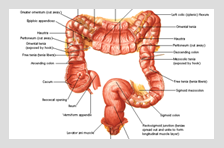My Account | My Wishlist | My Cart | Checkout | Customer Service | Log In
![]() MY CART 0.00
MY CART 0.00

|
QUICK LINK
Contact Form :
Your Name: Your Email: Phone: Message: |
Enema Information
An enema is the cleansing of the colon or large intestine. It involves the injection of a solution into the rectum to soften the feces, distend the colon and rectum, and thereby cause the easy emptying of the bowel. An enema is often given for relieving constipation, cleanse the colon or part of a body detoxification program. Temperature? Most people find that a warm water enema can be held more easily than a cold one. Some people use a cool water enema when they need to force out water and material that is stuck in the bowel. The temperatures given are that of the water as it is poured into the bag. It cools off some before it gets into the colon. Don't try to judge temperature with your fingers, they're too unreliable. If you don't want to use a thermometer, use your tongue! It's a fairly reliable reference for body temperature. Cool water is 30 - 35 degrees C ( 86 - 95 degrees F ) Warm water is 40- 42 degrees C ( 104 - 108 degrees F ) Hot water is 43 - 45 degrees C( 110 - 113 degrees F ) Don't take water any hotter than 45 C or 113 F or you can scald the colon. You can take it as cold as you can stand, some take crushed ice enemas, but I suspect most people couldn't even accept water that cold into their bowel. Anatomy of the Colon?
Please see the following diagram of the colon.
Positions?
There are many positions in which an enema can be taken. Two of the most widely known are the "Sims" position and the "Knee-Chest" position. The Sims position has the recipient lying on the left side, with the right knee brought up near the chest. The Knee-chest position has the enema supported by the knees and the shoulders, with the chest sagging down, so that the chest almost touches the floor. This places the abdomen nearly upside down, so that the water can flow down from the rectum to the transverse colon by gravity. In cases of deep-seated constipation, this position will help the water reach way up into the colon for a good cleaning out. It is also useful in a technique for floating air or gas in the colon above the water so that the air can be expelled. Capacity? Every individual has his or her own capacity, and it will change from each enema to the next. The cleanliness of the colon and the amount of gas present will have a great effect on the volume of water that can be taken. Medical researchers have determined that the average adult human colon has a capacity of 7 quarts. I believe that this measurement may have been made using colons removed from cadavers, who wouldn't complain about the pressure. It may be that the average colon has this capacity, but that no one except a woman who has just delivered a baby has that much room in the abdomen to allow the colon to expand to its fullest. You may want to experiment with this by taking the largest enema that is comfortable, and then rolling from side to side very slowly and seeing if the water runs downhill to distend the lower side more. You probably will find that the lower part of the colon will be noticeably more swollen, indicating that it is your abdomen that is unable to expand to allow the colon to accept any more fluid. Retention?
Most people will find it difficult to retain an enema for more than 5 minutes. If the bowel is not clean, then the peristaltic action of the colon will push against the fecal masses and produce intense pressure. This will frequently happen with your first enema in a series. Not much to do but expel and try again. If you get a strong cramp and an urge to expel, getting up is the worst thing you can do. Making the descending colon vertical adds gravity to the force pushing out. This is how to have an accident. If you can, wait while lying down. The pressure will pass in 10-15 seconds as the wave of peristalsis passes the sigmoid colon and reaches the end. Then you can get up and expel without straining to hold it in. If you must go to the toilet, and the pressure is intense, you can hold the buttocks together with both hands. This helps the anal muscles keep it in. Expulsion?
Most people will find it difficult to retain an enema for more than 5 minutes. If the bowel is not clean, then the peristaltic action of the colon will push against the fecal masses and produce intense pressure. This will frequently happen with your first enema in a series. Not much to do but expel and try again. If you get a strong cramp and an urge to expel, getting up is the worst thing you can do. Making the descending colon vertical adds gravity to the force pushing out. This is how to have an accident. If you can, wait while lying down. The pressure will pass in 10-15 seconds as the wave of peristalsis passes the sigmoid colon and reaches the end. Then you can get up and expel without straining to hold it in. If you must go to the toilet, and the pressure is intense, you can hold the buttocks together with both hands. This helps the anal muscles keep it in. |
Home | Products | Ordering | Enema FAQ | Testimonial | Contact Us | Colon Cleaning Program

